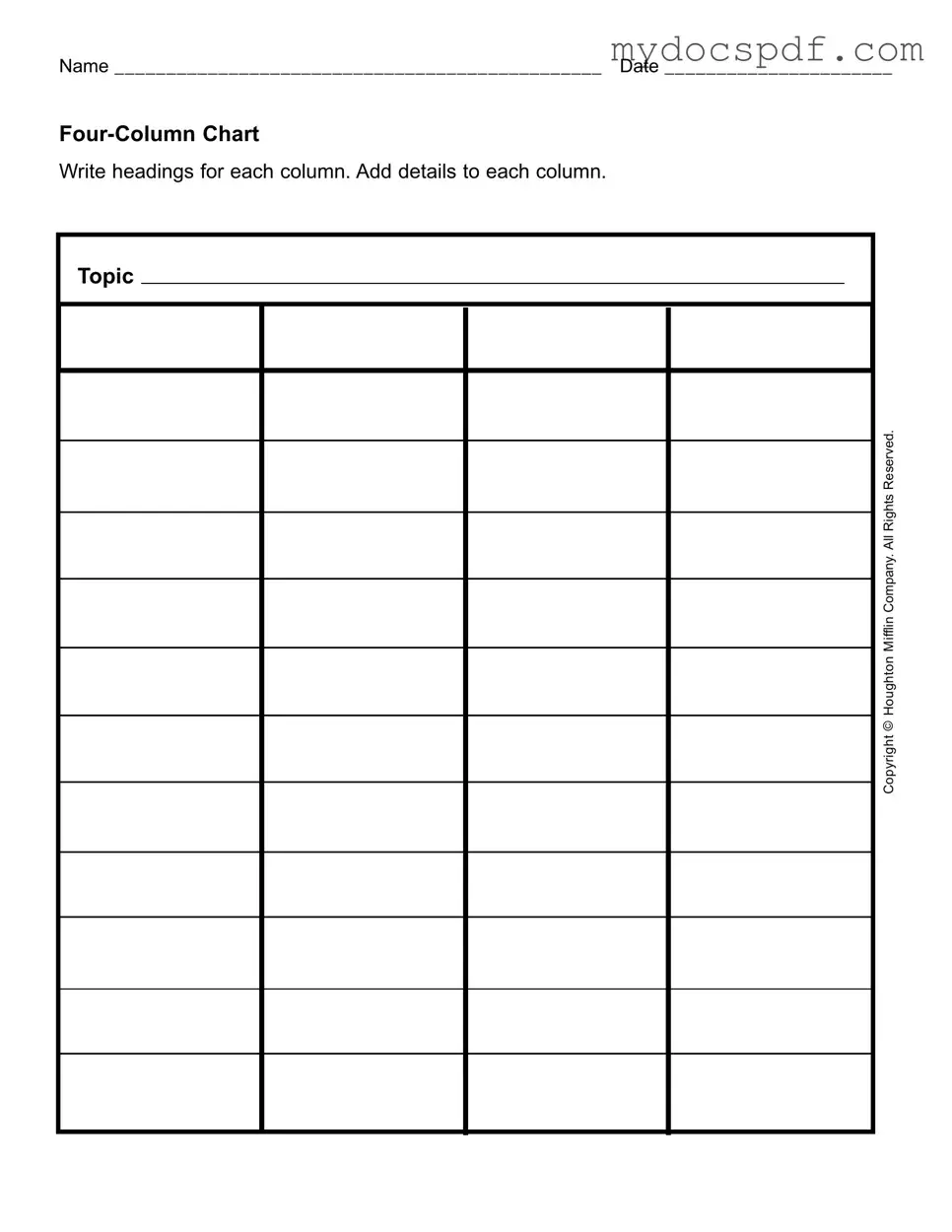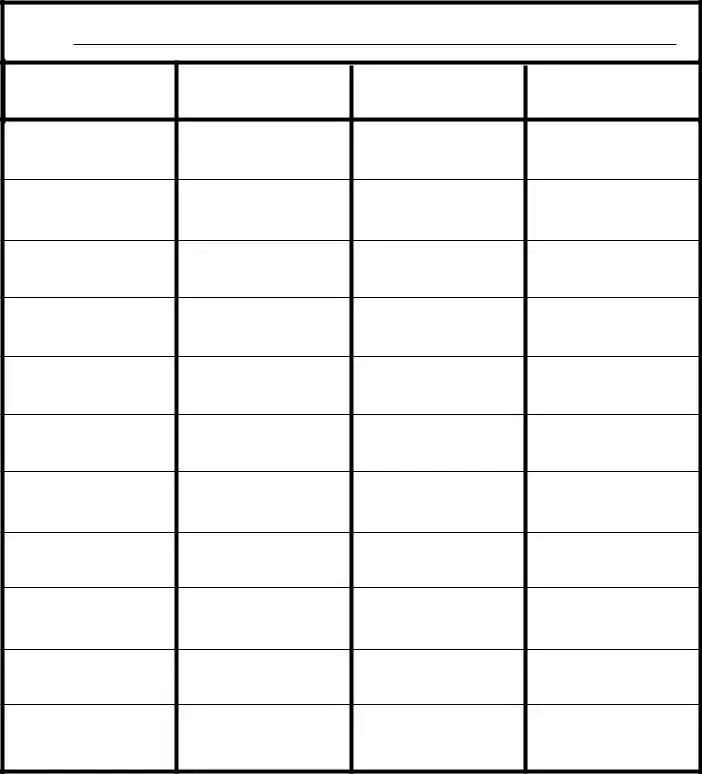In the realm of organized information, the Four Column Chart form stands out as a powerful tool for clarity and analysis. This structured format allows individuals to break down complex topics into manageable segments, promoting a deeper understanding of the subject matter. Each chart comprises four distinct columns, where users can write headings that define the focus of their analysis. The first column typically captures key topics or themes, while the subsequent columns provide space for detailed information, observations, or related ideas. By visually separating these elements, the Four Column Chart encourages thoughtful engagement with the material, making it easier to identify relationships and draw conclusions. Whether used in educational settings, business meetings, or personal projects, this form offers a versatile approach to organizing thoughts and facilitating discussions. The Mifflin Company has recognized the effectiveness of this method, ensuring that it remains a valuable resource for those seeking to enhance their analytical skills.

